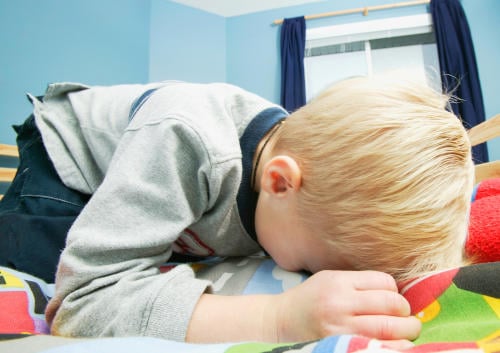You may or may not have come across the term ‘autistic burnout’. It’s a recent idea that is gradually making its way into mainstream awareness although it’s an aspect of neurodiversity which has always been there.
According to the National Autistic Society’s website, ‘Autistic burnout is a syndrome conceptualised as resulting from chronic life stress and a mismatch of expectations and abilities without adequate supports. It is characterised by pervasive, long-term (typically 3+ months) exhaustion, loss of function, and reduced tolerance to stimulus.’
Burnout Can Cause Complete Withdrawal

A child with ASD experiencing burnout might withdraw from all aspects of their life and be unable to go to school or work or interact with friends and family. It’s similar to a meltdown in that it’s a response to life-overload though a meltdown is usually a short, sharp reaction.
Factors contributing to burnout, the NAS suggests, might include:
- The strain of ‘masking’ ASD symptoms or suppressing ‘stims’
- Unreasonable expectations from school, family or employers
- Sensory issues such as noisy or crowded environments
- Changes and transitions such as starting secondary school or moving home
- Not enough support
- Finding it difficult to ask for help
More Sensitive to Sensory Input

Fine artist Mahlia Amatina, who lives in Reading, received an autism diagnosis eight years ago as an adult after being wrongly labelled as having borderline personality disorder in her younger days. She creates mixed-media, abstract images and multi-sensory experiences, which are often inspired by her neurodivergence, and has been awarded Arts Council funding.
Mahlia has come to realise that she sometimes suffers from burnout. “All autistic people are different but I would say that whatever a person’s sensitivities are, they will become heightened during burnout,” she explains. “For me, I struggle with the built environment so public transport and shops are always difficult but this gets much worse. My sensory sensitivities become more pronounced and I can’t do anything because of my anxiety. I completely shut down.”
Burnout occurs, she maintains, because of the stresses of trying to fit in in a neurotypical world. Although she says she doesn’t get much warning that shut-down is imminent, it helps that she has taken the time to understand her own triggers and what is likely to overwhelm her.
Identifying Stressors Helps

“Self-knowledge is crucial, it helps with independence,” Mahlia urges. “I would advise families to help their autistic child to recognise what works for them. As I say, I struggle with public transport but I have strategies in place to help me cope when I have to use it. People also learn through real-life experience so it can be helpful to analyse what someone didn’t like about a situation or why they couldn’t cope.”
Creating art, she says, helps her to stay calm. “Art transcends boundaries and gives you a language when you can’t find the right words. It helps me to feel seen and heard.”
Allow Autistic People to Regulate Themselves

Specialist SEN tutor Jane has worked with a number of students with ASD over the years. “I haven’t witnessed anyone completely shut-down but I often see young people on the edge of ‘losing it’,” she comments. “They stop looking at you or talking or participating in the lesson. Stimming or repetitive behaviours also increase.
“It’s really difficult for autistic people as they must feel like they just can’t ‘fit-in’ in the world,” she continues. “I suspect many feel like they’re always doing the ‘wrong’ thing and that’s bound to take its toll on a person. I’m sure a lot of school-refusers are young people experiencing burnout. I also work with one young man who has periods of extreme lethargy. People get to a point where they can’t take any more.”
Jane speculates that allowing autistic people to regulate themselves – even if it appears socially unacceptable – probably goes a long way to staving off burnout. “I work with one young man who twists his fingers to calm himself,” she explains. “Another student always needs to talk about whatever’s on his mind. He turns up to the lesson saying, for example, ‘What’s the difference between ‘upset’ and ‘devastated’?’ I let them do whatever they need to. If I don’t, I’m not allowing them to be themselves, am I? I would hate my students to go away more anxious than when they arrived. Their quirks are a way of getting back to the status quo.”




